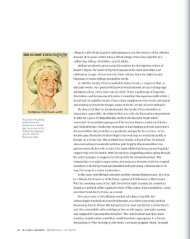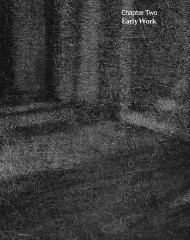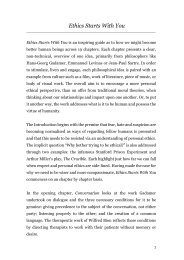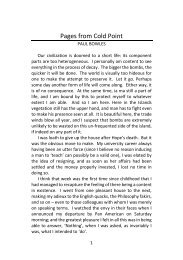You also want an ePaper? Increase the reach of your titles
YUMPU automatically turns print PDFs into web optimized ePapers that Google loves.
18 from refugees <strong>to</strong> royalty<br />
Ludewig I, Grand<br />
Duke of Hesse, from<br />
a portrait by Louis<br />
Ammy Blanc<br />
prevent contagion. <strong>From</strong> the preamble <strong>to</strong> his will Gumpel<br />
clearly knew that his illness would soon lead <strong>to</strong> death, which<br />
is consistent with smallpox. Perhaps his business dealings<br />
brought him in<strong>to</strong> more regular contact with the Christian<br />
population and exposed him <strong>to</strong> the virus.<br />
Gumpel lies buried in the Jewish cemetery of Dieburg<br />
next <strong>to</strong> his father Aharon. His <strong>to</strong>mbs<strong>to</strong>ne is well preserved<br />
with the <strong>to</strong>p half of the Hebrew inscription clearly legible in<br />
the red sands<strong>to</strong>ne below an elaborate pitcher and basin. Both<br />
Gumpel and his father bore the Hebrew name Jehuda (Judah,<br />
fourth son of Jacob) for use in synagogue, and, in keeping<br />
with Jacob’s description of Judah as a lion in Genesis 49:9,<br />
the male members of the family were given the secular<br />
nickname of Lion – in Aharon’s case the Yiddish versions<br />
Leib or Löb; for his sons and grandsons the German version Löw. Yet the presence<br />
of a pitcher on the <strong>to</strong>mbs<strong>to</strong>nes of both Gumpel and his younger brother Ephraim<br />
denotes that they were a Levite family, as it signifies the Levites’ ritual duty of<br />
purifying the hands of the priests (cohanim) before religious services. 7<br />
As provided for in Gumpel’s will, the family passed <strong>to</strong> the guardianship of his<br />
brother Ephraim in Darmstadt. The family home was sold on 9 June 1806 <strong>to</strong> the<br />
innkeeper Johann Michael Wältz for the sum of 700 guilders, and Gumpel’s son<br />
Aron Löw Messel moved <strong>to</strong> Darmstadt soon afterwards. Aron was already active<br />
as a tradesman in his own right, and his business acumen in this period was <strong>to</strong> lay<br />
the foundations for the Messel family’s future prosperity. As with other notable<br />
families that built up banking empires in the nineteenth century – both Jewish<br />
and non‐Jewish – it was war that enabled Aron <strong>to</strong> accumulate the initial capital<br />
he needed.<br />
Ludwig X, Landgrave of Hesse‐Darmstadt, had sided with the Holy Roman<br />
Empire against Napoleon in the French Revolutionary Wars that raged across<br />
Europe until 1801. Yet five years later, with Darmstadt under military occupation<br />
by French troops, he signed up as one of the client states in the Confederation of the<br />
Rhine created by Napoleon as a buffer against France’s principal adversaries on<br />
the Continent: Prussia and Austria. By way of reward Ludwig’s newly expanded<br />
terri<strong>to</strong>ries were confirmed by Napoleon and his title upgraded <strong>to</strong> Grand Duke<br />
of Hesse, whereupon he enlarged his own name <strong>to</strong> the grandiose Ludewig I. The<br />
village of Messel was incorporated in<strong>to</strong> the Grand Duchy of Hesse and its male<br />
inhabitants required <strong>to</strong> perform several years’ military service in order <strong>to</strong> help<br />
make up the three regiments that Hesse had <strong>to</strong> contribute <strong>to</strong> the Napoleonic<br />
forces. While some fought in Spain or Austria, many were forced <strong>to</strong> take part<br />
in Napoleon’s disastrous invasion of Russia during the winter of 1812. Of the










